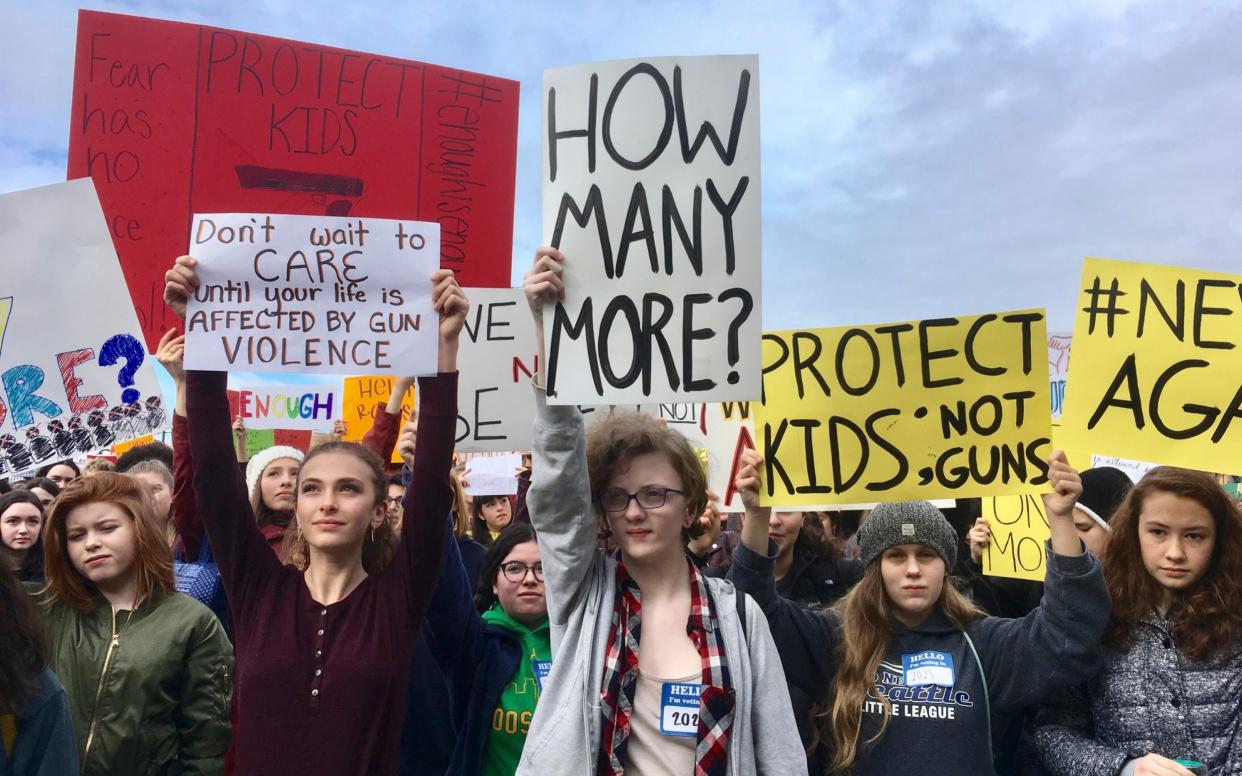Anti-gun campaigners declare 'major breakthrough' as US Congress opens the door to research on gun violence

The US Congress has opened the door for America's public health institute to carry out research into mass shootings in what anti-gun campaigners declared a "major breakthrough".
It came as 500,000 people were set to descend on Washington today (Saturday) for a rally organised by survivors of the country's worst high school massacre, which took place in Florida last month.
For the last 22 years the $7 billion-a-year, publicly funded US Centers for Disease Control and Prevention (CDC), which is home to the largest number of violence prevention experts in the world, has effectively been stopped from conducting research into gun safety.
The freeze followed the introduction of a 1996 law, the Dickey Amendment, which was inspired by the National Rifle Association. It said that none of the CDC's government funds could be used to "advocate or promote gun control".
Whilst not banning research outright there was a chilling effect on gun research, and CDC funds were ploughed into other areas.
As a result there have been no nationwide studies done on issues such as who owns America's hundreds of millions of guns, how many homes have guns, how often they are stolen, if better training for users might improve safety, or whether concealed carry permits increase or decrease risk.
Because of the Dickey Amendment guns are not treated as a public health problem in the manner of cigarettes, HIV, or opioids.

In article for The Telegraph Mark Rosenberg, who headed CDC research into gun violence before the amendment, said there should be a similar response to that against road traffic accidents in the 1960s, when the US government started spending $200 million on research, saving 350,000 lives. There has been no such investment into gun violence.
Politicians have therefore lacked scientific studies on which to base proposals for gun control legislation.
"After every mass shooting we are cautioned to wait for the facts before we act. But because of the Dickey Amendment we don't have the facts," said Senator Martin Heinrich, a Democrat congressman from New Mexico, who is himself a gun owner.
But as Congress passed a $1.3 trillion spending bill on Friday it included a "clarification" to the Dickey Amendment.
The clarification consisted of comments made the day after the Florida shooting by Alex Azar, Donald Trump's health secretary.
Mr Azar was clear that the amendment should not prohibit the CDC researching gun violence. He said: "My understanding is it does not in any way impede our ability to conduct our research mission."
The adoption of those comments into law, agreed by Democrats and Republicans, could now unlock the CDC to renew its research after two decades.

Stephanie Murphy, a congresswoman from Florida who introduced the clarification, said: "It makes it clear the CDC can research gun violence. It's a victory for our country and children. Our work to stop gun violence will continue."
The Brady Campaign to Prevent Gun Violence said it could have a "dramatic impact" on research. The group said: "We are no longer in the ice age when it comes to this."
However, a spokeswoman for the NRA denied it changed anything. She said: "I guess for folks who can't read or do not understand the English language, it helps them understand."
The Dickey Amendment was originally introduced by Jay Dickey, a congressman from Arkansas and leading NRA supporter. Since 1996 at least 600,000 people have been shot in America. More than 100 medical groups, including the American Medical Association, have called for Dickey to be overturned.
Mr Dickey himself later renounced his own law, saying he regretted being "so reactionary," but it remains on the statute books.
One former CDC employee, who worked there at the time of the Sandy Hook massacre, told The Telegraph: "Something I learned at the CDC was that people considered researching anything to do with guns a career-ender.
"If you read the language of Dickey it's not a ban, but it definitely felt like a ban. At the CDC it became 'You can't talk about guns'. They studied ladder safety, black lung, and all sorts of occupational health issues, but not gun violence."
There were fears that researching guns would lead to NRA supporters in Congress retaliating by cutting funding for other CDC research areas, the former employee said.
While the clarification was being viewed as a victory by anti-gun campaigners others said it was a "baby step".
Mr Rosenberg, who headed CDC research into gun violence before the Dickey Amendment, said what was really needed was a funding commitment from Congress of $100 million, a similar level to what was spent on researching road safety decades ago.
He told The Telegraph: "We need to do the same kind of science we did to reduce deaths on roads. Back then we researched cars and we made them safer with seat belts, air bags, collapsible steering columns. We made the roads safer with roundabouts and barriers down two-lane highways. And we did it all without actually getting rid of cars.
"But with solutions for gun violence now it's like allowing thalidomide without testing it. You need to carry out the research and to know it works before you do it."
In his article for the Telegraph Mr Rosenberg also revealed how he and his former "mortal enemy" Mr Dickey had become "wonderful friends".
Mr Dickey died last year.
Mr Rosenberg said: "It would honour Congressman Dickey to know that this research will be born again."
Protect yourself and your family by learning more about Global Health Security

 Yahoo News
Yahoo News 
